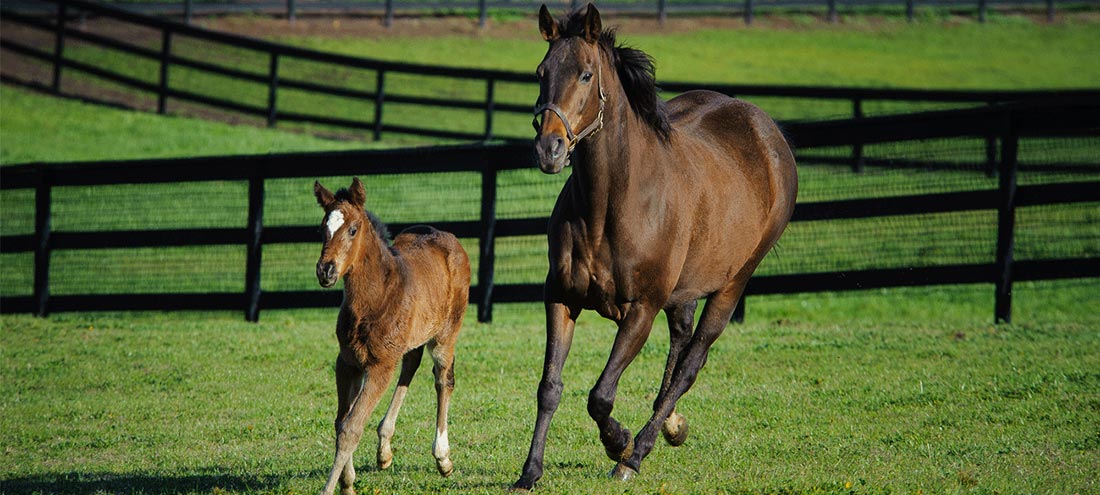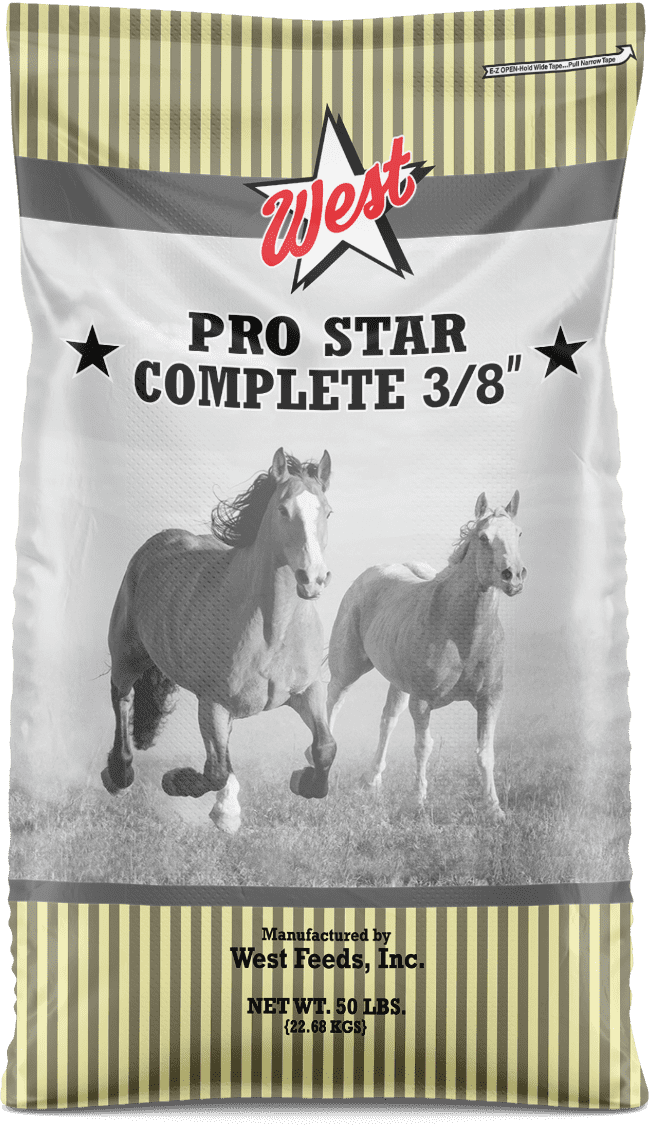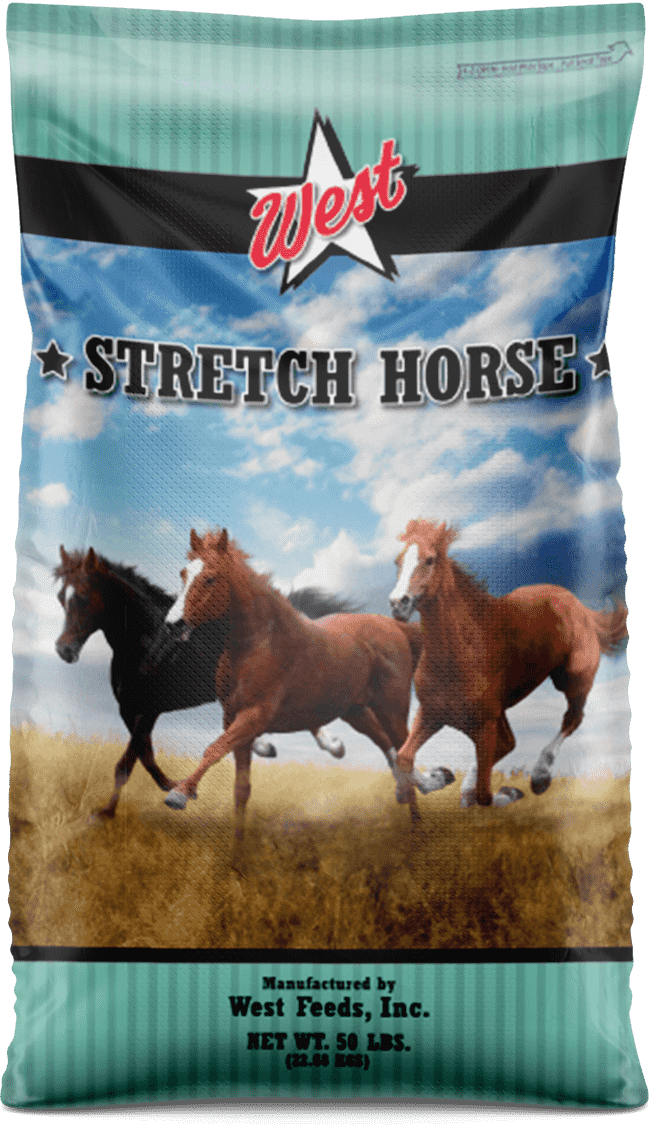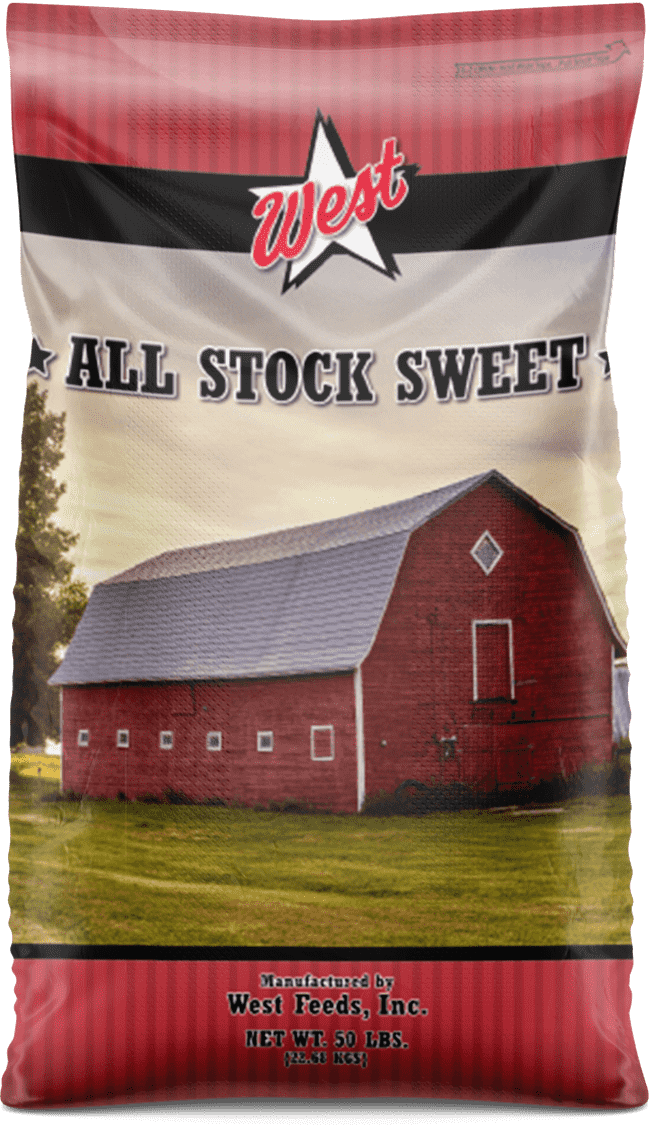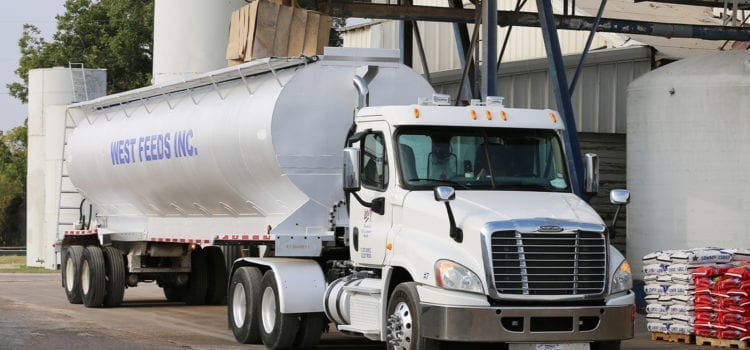Just like people, every horse is unique. From their personalities and feed preferences to their drinking habits, these animals can be just as different from one another as apples and oranges—as any horse owner knows.
For this reason, it’s always a good idea to consult with a local veterinarian about your horse’s dietary needs and health. Veterinarians can help you monitor your horse’s nutritional intake and recommend necessary changes, especially as your four-legged pal ages.
While horse nutrition may seem (and definitely can be) complicated, having a general working knowledge of the health and dietary habits of our equestrian friends is valuable for any horse owner.
Below, we outline the basic elements of horse nutrition and then survey how a horse’s nutritional needs change as they age. Our goal is to keep things as straightforward as possible so you can understand how to provide the very best in nutrition, health, and performance for your horses.
Browse Horse Feed Types:
The Basics of Horse Nutrition
First, horses’ diets are made up of six vital nutrients: water, carbohydrates, protein, fat, minerals, and vitamins. Let’s take a quick look at each.
Water is, by far, the most critical component of a horse’s intake. A horse’s daily water requirements vary depending on their age, body condition, activity, diet, temperature, and other factors.
Given their size, horses need quite a lot of water to maintain their bodily functions. A horse weighing between 1,000 and 1,200 pounds requires 8 to 10 gallons of water per day even while completely idle. Naturally, workhorses need more, perhaps 10 to 18 gallons of water each day. Lactating mares have higher-than-average water requirements too, as their bodies need water to produce milk. Lactating mares may require 50–75% more water than non-lactating mares.
When it comes to hydration and horse care, it is best practice to supply a constant source of clean and fresh water for your horses.
Next, we have carbohydrates. Carbohydrates are broken down by the body into glucose, which is used by horses (and all other animals) as an energy source. Carbs are plentiful in the average horse diet. They are found in pretty much every feed source, including hays and grains. Be careful not to feed your horse large amounts of carbs at one time, though, as this can result in colic or laminitis.
Protein is important for foal growth, lactating mares, and working horses to support muscles, enzymes, and hormones. Excellent sources of protein include soybean and canola seed meal, as well as legumes like alfalfa, lupin, and tick beans. Protein-rich feeds also include essential amino acids your horse needs, such as lysine.
Fat is high in energy. Certain types of fats also likely have the same anti-inflammatory properties in horses as they do in humans. Horses can eat and digest fats but, since they don’t have gallbladders, high-fat diets are not ideal. Fat is best for younger and older horses who need more calories.
Minerals such as calcium, phosphorus, copper, and zinc are important for maintaining bone density and supporting your horse’s nervous system. Typically, horses also get enough of these minerals in their regular diet, though young and working horses sometimes need mineral supplementation.
One thing to be aware of is that the amount of one mineral in a horse’s diet can affect how effective another mineral is. For example, if there is too much phosphorus in a horse’s diet, calcium might not be properly utilized by the body. Therefore, it’s important to have more calcium than phosphorus (usually suggested as a ratio of 2:1).
Essential vitamins like vitamin A, B, and C are necessary for horses, too. Most horses do not need vitamin supplements because they usually get enough through their main diet, sunlight, and natural, internal processes. However, hardworking horses may require vitamin supplementation.
About Your Horse’s Eating Style
You may have noticed that, just like people, horses like to snack throughout the day. However, unlike most of us, horses actually have to be munching on something or other all day long. Horses have small stomach capacities (especially relative to their large sizes), so horses must almost always be eating to get the nutrients they need. If you’ve ever wondered why horses seem to graze from sunup to sundown, now you know!
Horses are classified as “non-ruminant herbivores”. Non-ruminant is just a fancy way of saying they only have a single stomach and don’t regurgitate their food and “chew the cud” as, for instance, cows do. Another word for this chewing after regurgitating food is “rumination.” Horses don’t “ruminate,” so they’re called “non-ruminant.”
Since horses are grazing animals, the primary component of their diet is plants, also called forages. Forages include legumes and grasses, which can be converted into hay through drying and baling. Hay is uniquely suited to the horse’s ancestral eating habits. They can happily chew on hay that’s packed with nutrients all day long, which is a great option if wide, open pastures aren’t available.
The age of the grass or legume can affect its nutritional value. For example, legumes become more “stemmy” as they mature and—as the majority of the nutrients are in a legume’s leaves—stemmy legumes are harder to digest and less nutritious. For this reason, it’s good to pay attention to the age of your forages.
Feed for the Young and Growing Horse
You may think your kids grow up fast, but young horses grow really rapidly. Horses reach 90% of their adult height and 80% of their adult weight by the time they are one year old!

A mare’s milk alone is enough for the young horse for about their first 90 days. After that, creep feeding, which means supplying a separate feed source for a foal, helps your young horse wean and ensures it gets the proper nutrition. As foals get older, their water intake gradually increases, possibly due to their increased nutritional intake.
In the juvenile stage, protein is vital for muscle development and calcium is essential for bone growth. Phosphorus and lysine are also important at this stage.
Fat, packed with calories, helps a young horse grow. Feeding the foal fat instead of carbs also helps keep their blood glucose levels within an acceptable range.
Unlike older horses, young horses can’t subsist only on forage—you’ll need to provide a concentrate mix.
At this stage, you also need to be on the lookout for developmental orthopedic diseases like osteochondritis dissecans. Feeding a horse too much protein, for example, can result in orthopedic problems. Feeding your young horse adequate levels of calcium and phosphorus can help prevent these issues. Sometimes the problem is simply genetic and will develop even if you’ve done an excellent job of managing the young horse’s nutrition, so don’t beat yourself up!
When a horse has reached one year of age, they become what’s called a yearling. At this point, their diet should be split 50/50 between forage and concentrate.
Feed for the Working Horse
An adult horse should eat 1.5 to 2.5% of their total weight in forage each day. This is just a rule of thumb —all horses are different, so some need more feed than average and some need less.
For working horses, 1.5 to 2.5% of their total weight in forage is also generally sufficient, but you should supplement their diet with fortified grain or a complete work horse feed as well.
Average Daily Supplemental Requirements of Working Horses
[table id=1 /]
A hard-working horse also needs vitamin B and E supplementation as well as more calcium, magnesium, phosphorus, zinc, and copper than their non- or lighter-working counterparts. These minerals help upkeep the horse’s bone structure.
Remember, workhorses also require more water than idle or mostly idle horses. Make sure a constant supply of water is available for workhorses, especially if the temperature is high.
Feed for the Senior Horse
Just like people, horses age differently—some horses slow down sooner than others. Signs that your horse is becoming “old” include a loss of muscle mass, grey hairs, and a rougher coat as their hair becomes more brittle.
Like for any animal, the digestive system of a horse is subject to wear-and-tear as it gets older. Older horses have a harder time absorbing nutrients from their food. In particular, senior horses have a tough time digesting protein because the production of a special stomach acid which helps break down protein decreases as horses age.
Older horses’ teeth may also start to wear down. With worn-out teeth, horses cannot properly break down what they eat. The result, in many cases, is malnutrition.
All these nutritional challenges mean it’s a good choice to modify your senior horse’s diet.
How? Fortunately, feed companies—including our own here at West Feeds—produce a specially-formulated senior horse feed that meets the needs of older horses.
For example, senior horse feeds are made so that even horses with dental damage can chew them easily. Senior horse feeds also tend to be high in protein or fat, which makes up for the increased difficulty an older horse’s digestive system has in absorbing these vital nutrients. Because fat is particularly high in energy, you can make up for the lack of calories being absorbed by providing your senior horses with more fat in their diet.
Wrapping Up
It goes without saying that any horse diet needs to be specially tailored to the needs of horses. Thanks to decades of experience producing horse feed and feedback from the horse lovers of Texas, we have fine-tuned our horse feeds so that they pack a nutrient-rich punch, no matter the age or condition of your horse.

